| Topics |
|---|
| Jan 2022, Streaks. |
| Jan - Mar 2022, Blank Spots. |
| Jan - Mar 2022, Read Noise. |
| Apr 2022, Saturated Flats. |
ZTF Data Quality Issues
Ice Streaks, Jan 2022
In December 2021 the telescope developed a coolant leak. When the camera was retured to the telescope in 20th Jan 2022 crystals were observed on the face of it. These were seen to give rise to streaks in the images.(Nights affected: 20-01-2022, 21-01-2022)
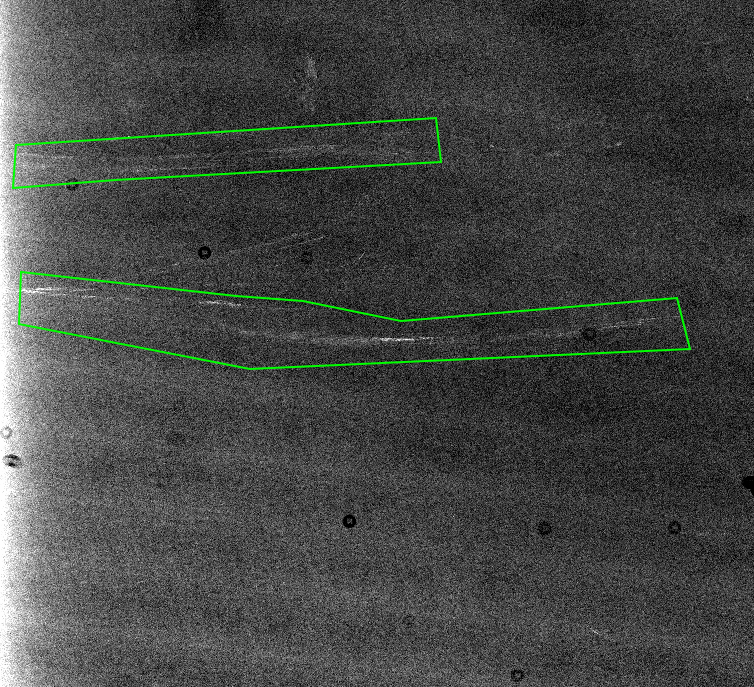
Blank spots, Jan-Mar 2022
Regular observations reveiled the presence of zeolite pellets that had been spilt into the instrumentation around Jan 20th. The particles cause dark obstructed spots within the images.(nights affected: 20-01-2022, 21-01-2022)
(known affected images, CCD 04, q1)
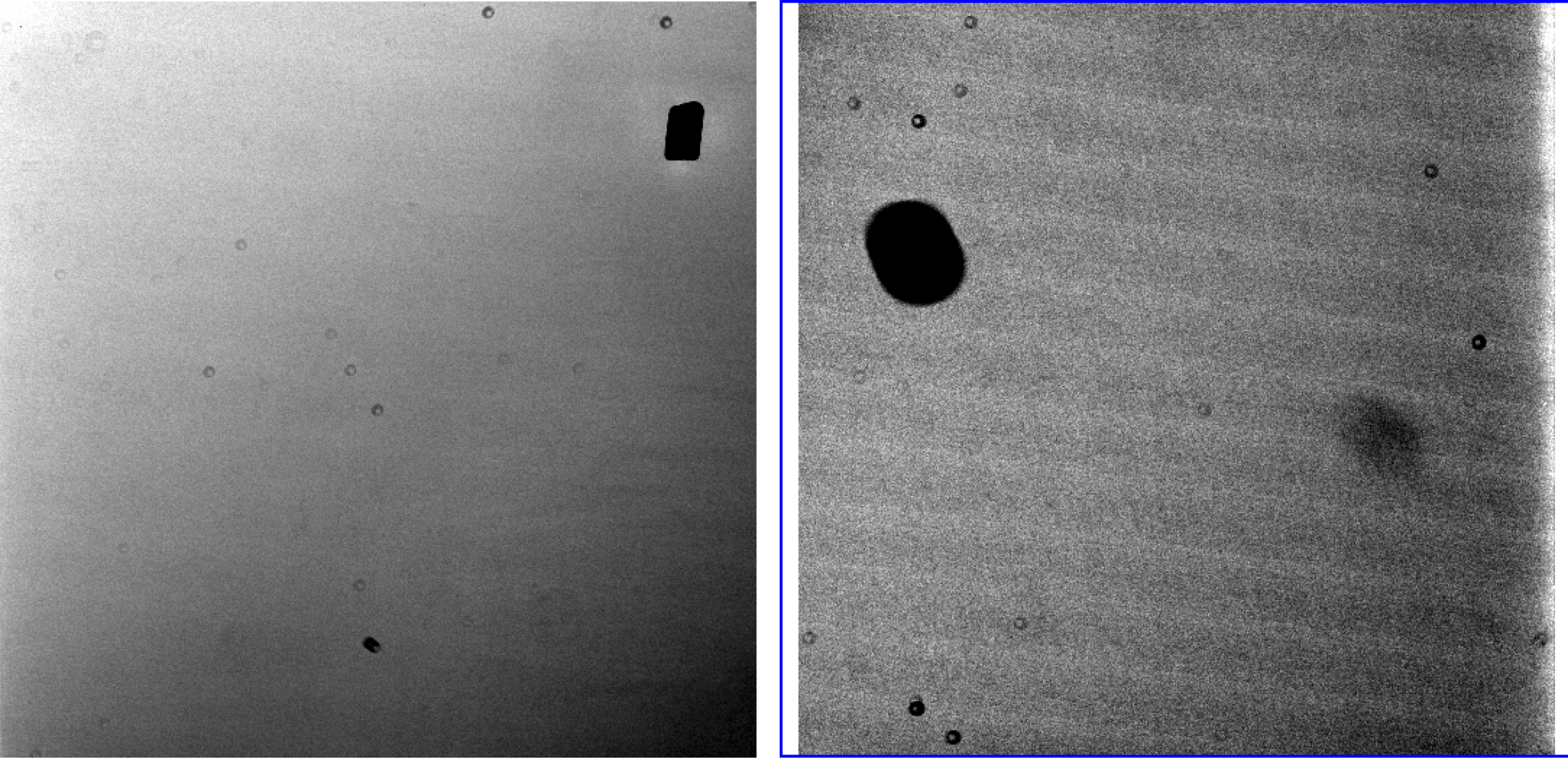
These particles either completely obstruct, or partialy obstruct light depending on there position with the instrument. Additionally the size of the obstructed area depends on the location. In the resulting processed data the completely obstructed images have a bitmasked flagged area at the location of the spot. However, the image is only masked where there is zero flux.
The partially obstructing spots a flatfield corrected without lead to masked pixels, except around the borders where diffraction and reflection leads to bright edge effects.
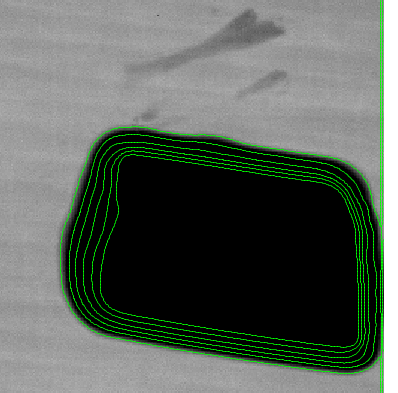

The instrument was returned to campus for cleaning. Observation began again on Feb 11th. However, it was discovered that a small number zeolite particles remained in the camera. So the camera was once again removed for cleaning.
In general the zeolite particles in this period only affect one
quadrant across the entire camera.
(nights affected: 21-02-2022 - 03-03-2022)
2022-02-15 - 2022-02-17, CCD 16, q4
2022-02-22 - 2022-02-16, CCD 05, q2
2022-02-27 - 2022-03-03, CCD 10, q3
2022-03-03 , CCD 15, q2
Read Noise, Jan-Mar 2022
ZTF images continue to be affected by read noise structure in many of the CCDs. The problem has been raised with CCD team (twice, with no reply). No steps have yet be taken to address this situation.
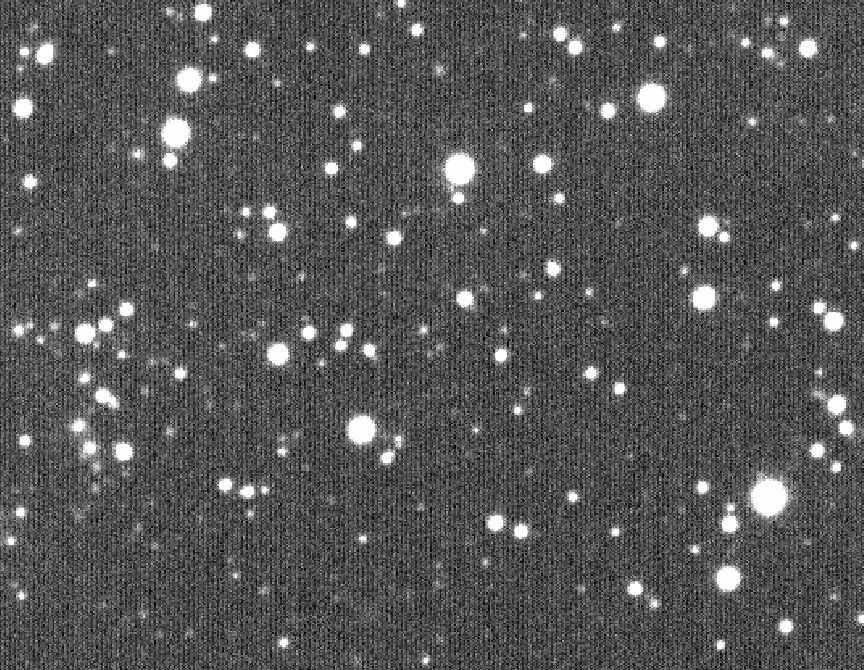
An image of the read noise currently present in ZTF images. The image is from CCD14, quadrant 3.
Saturated Flats, April 1-4 2022
The ZTF camera was returned to operation on 2022-04-01 after the second zeolite cleaning operation. The next day it was discovered that the flatfield images for a number of filters and CCDs were saturated.
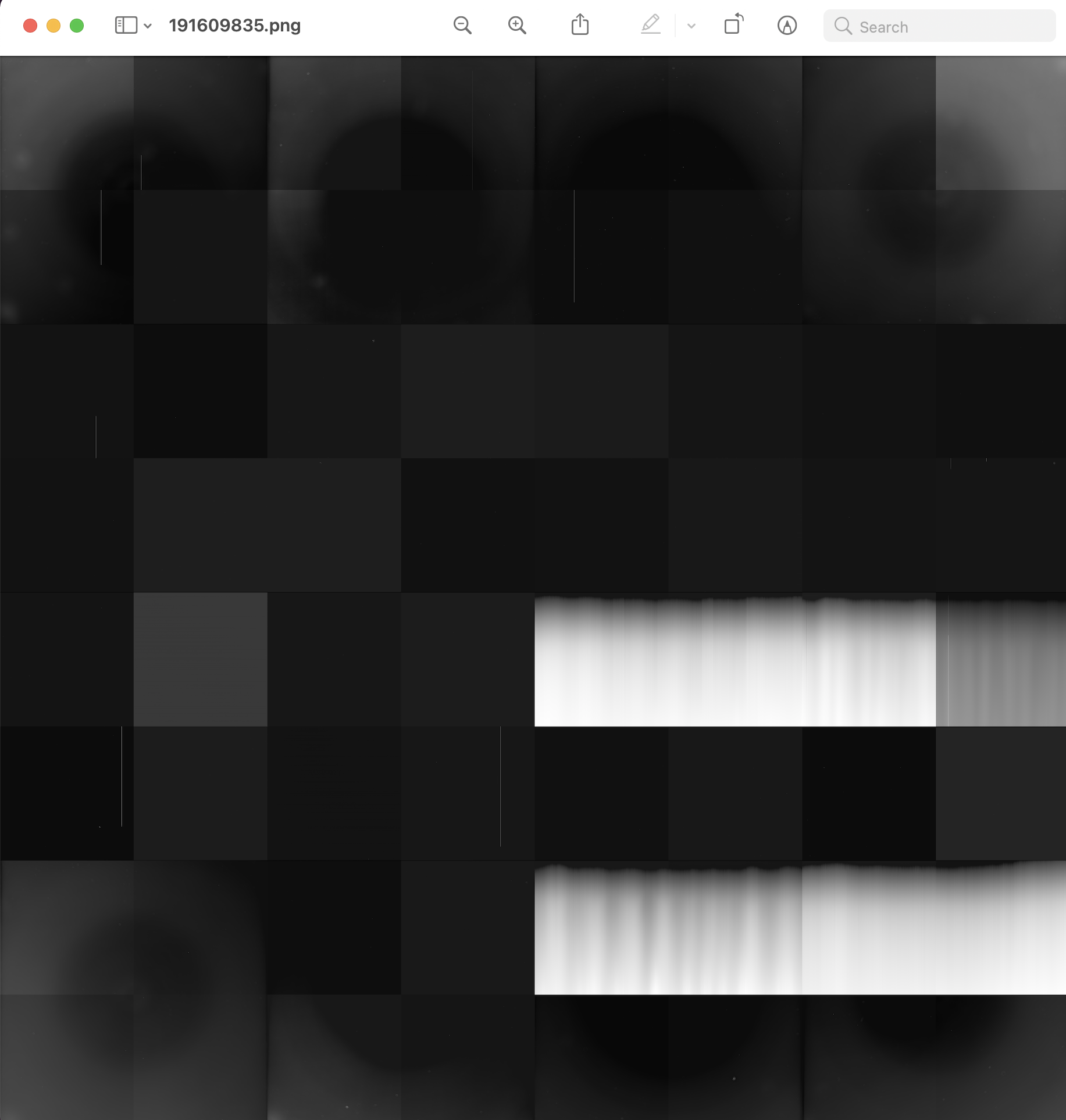
A full camera flatfield image taken on 2022-04-01.
Above we show flatfields where are few quadrants are clear saturated.
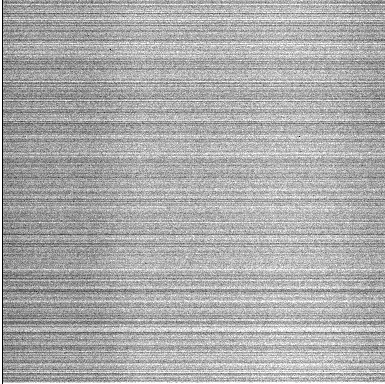
An image of a saturated flatfield image taken on 2022-04-01.
A closer look showed, as presented above, that some images were completely saturated. In fact it was found that all filters and most CCDs were saturated to some degree. It was noted that the problem might be related to the CCDs not being cool since the camera had only just be placed on the telescope. However, this was not the case and the issue continued to affect a second night of data.
Reviewing prior data it was discovered that a prior time when frames were saturated the problem was that the wrong waveforms had been used with the CCDs. It was also seen that crosstalk artifacts had reappeared. It was found that this was indeed the case. The correct waveforms were linked. However, the saturation remained in some of the i-band images.
The exposure times were eventually reduced to ~70% and the frames taken between April 1st and 4th were reprocessed. The Zubercal data was also reprocessed. Since some of the saturated frames were used in references, those frames were recreated and updated in the IRSA db.